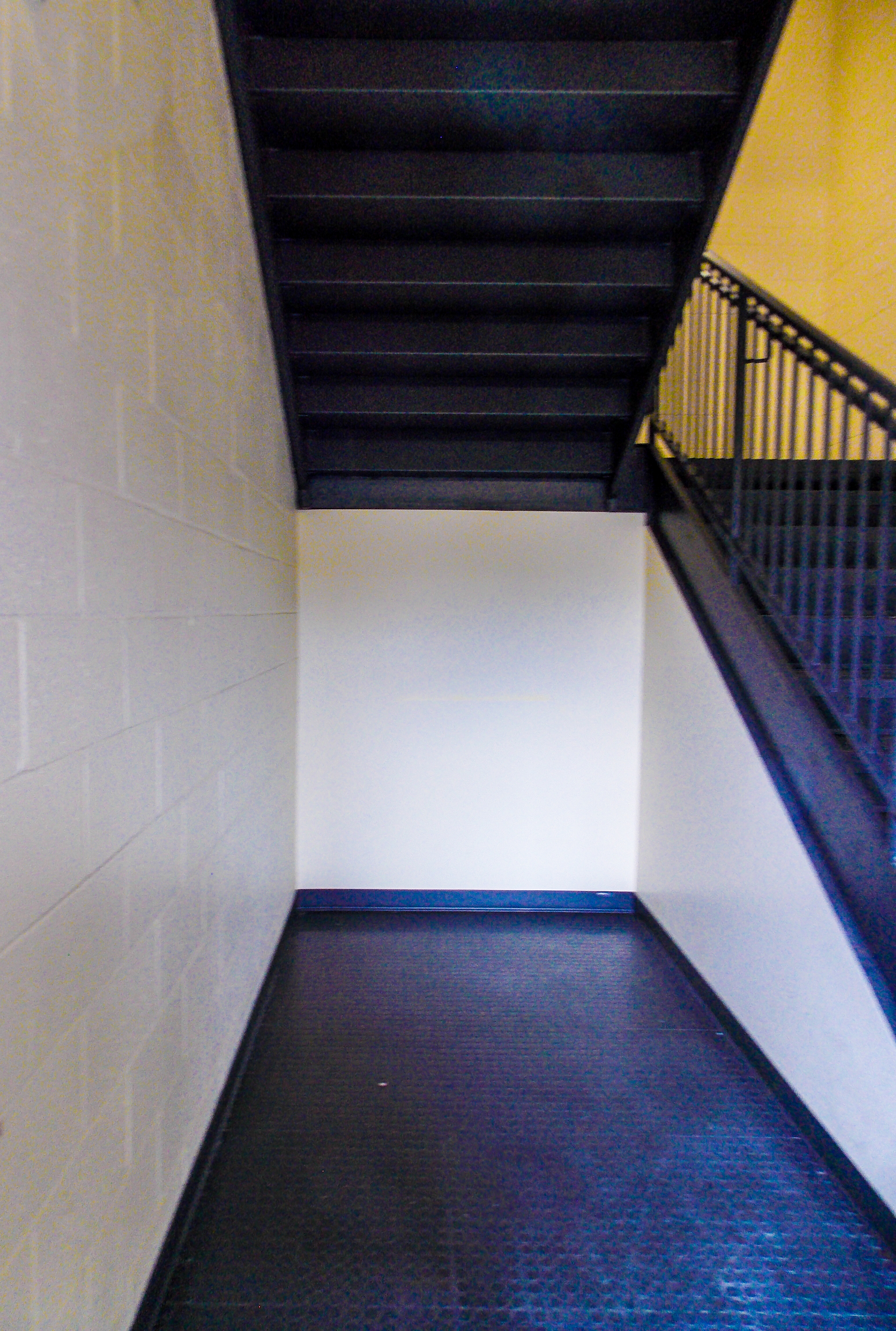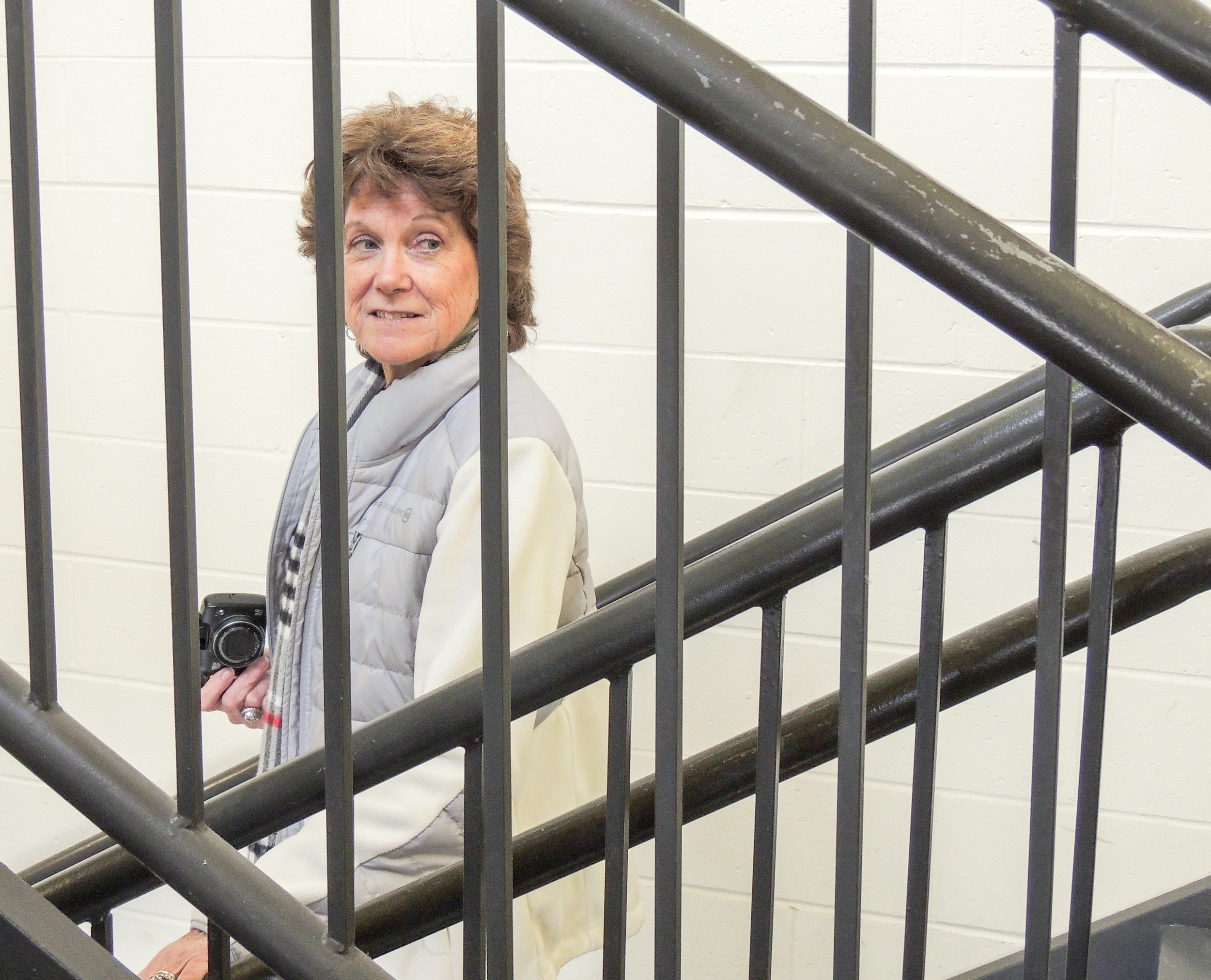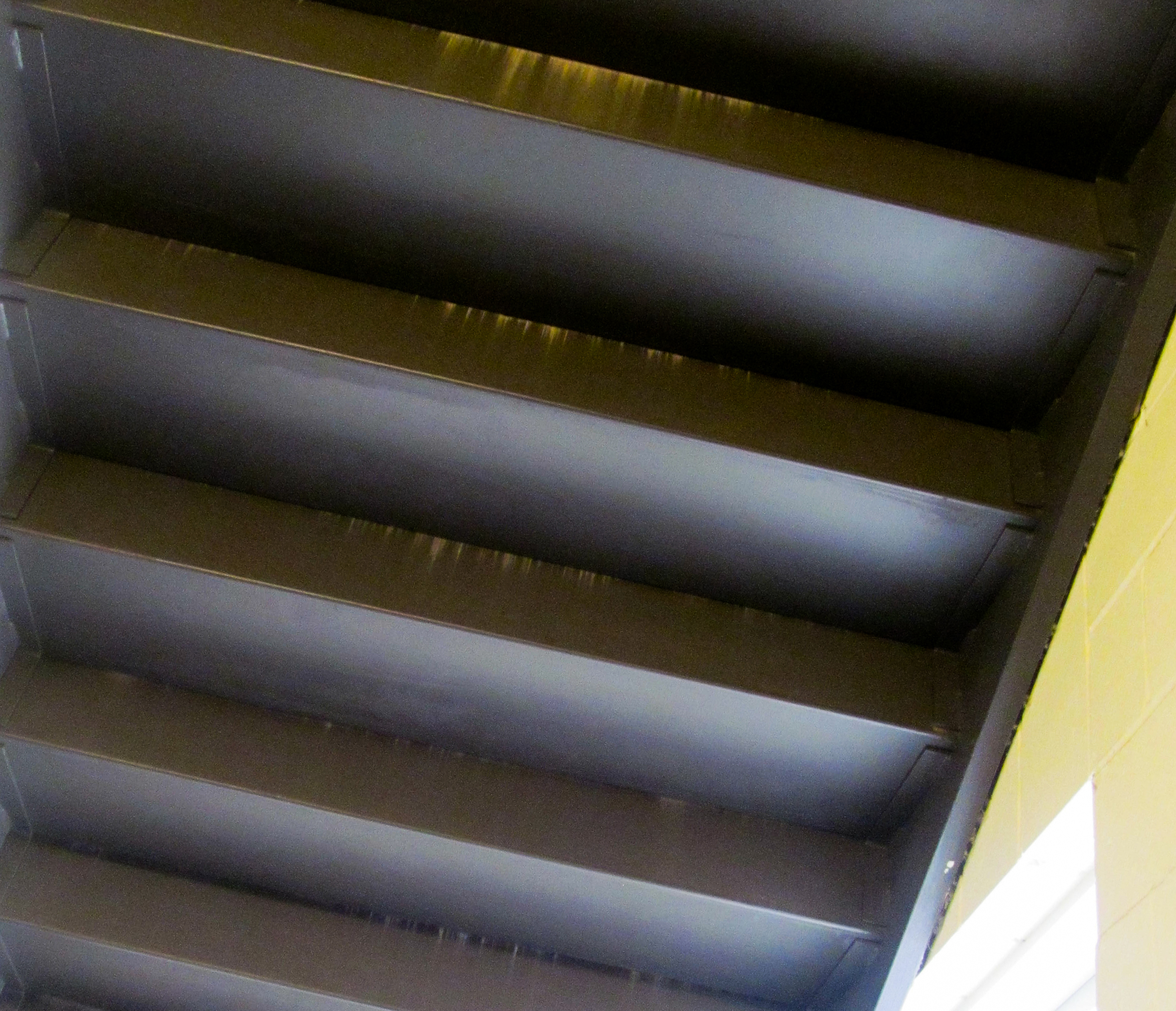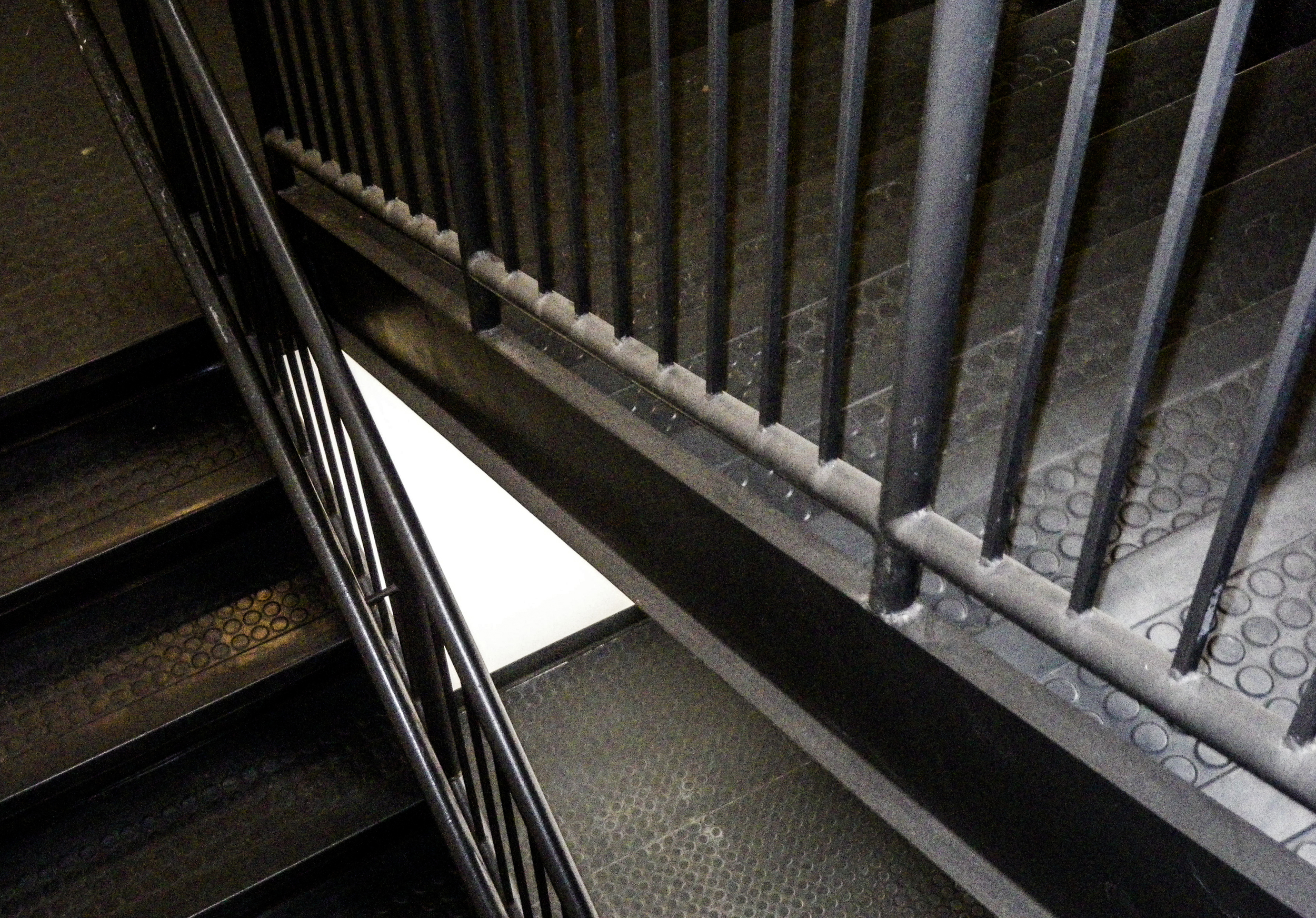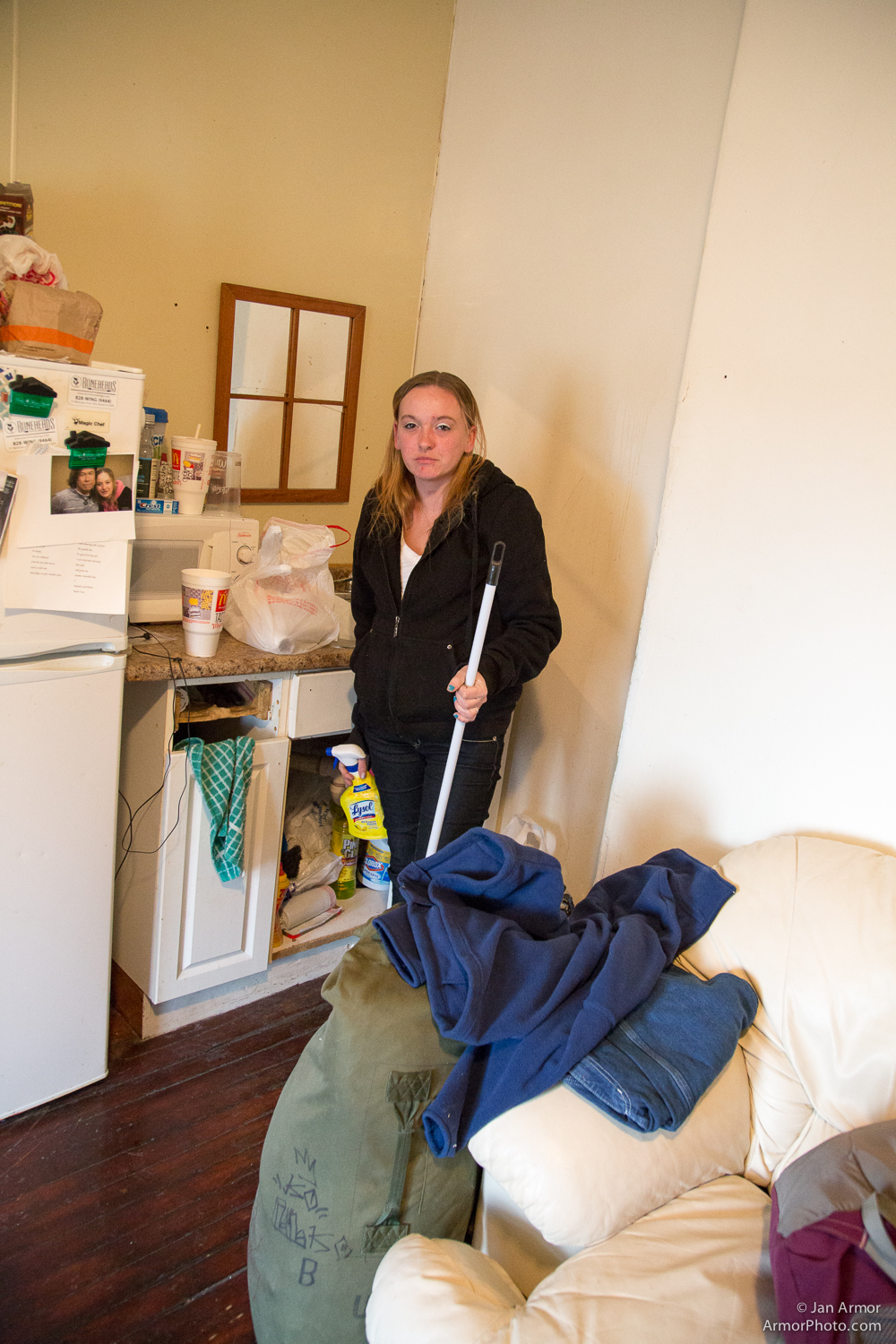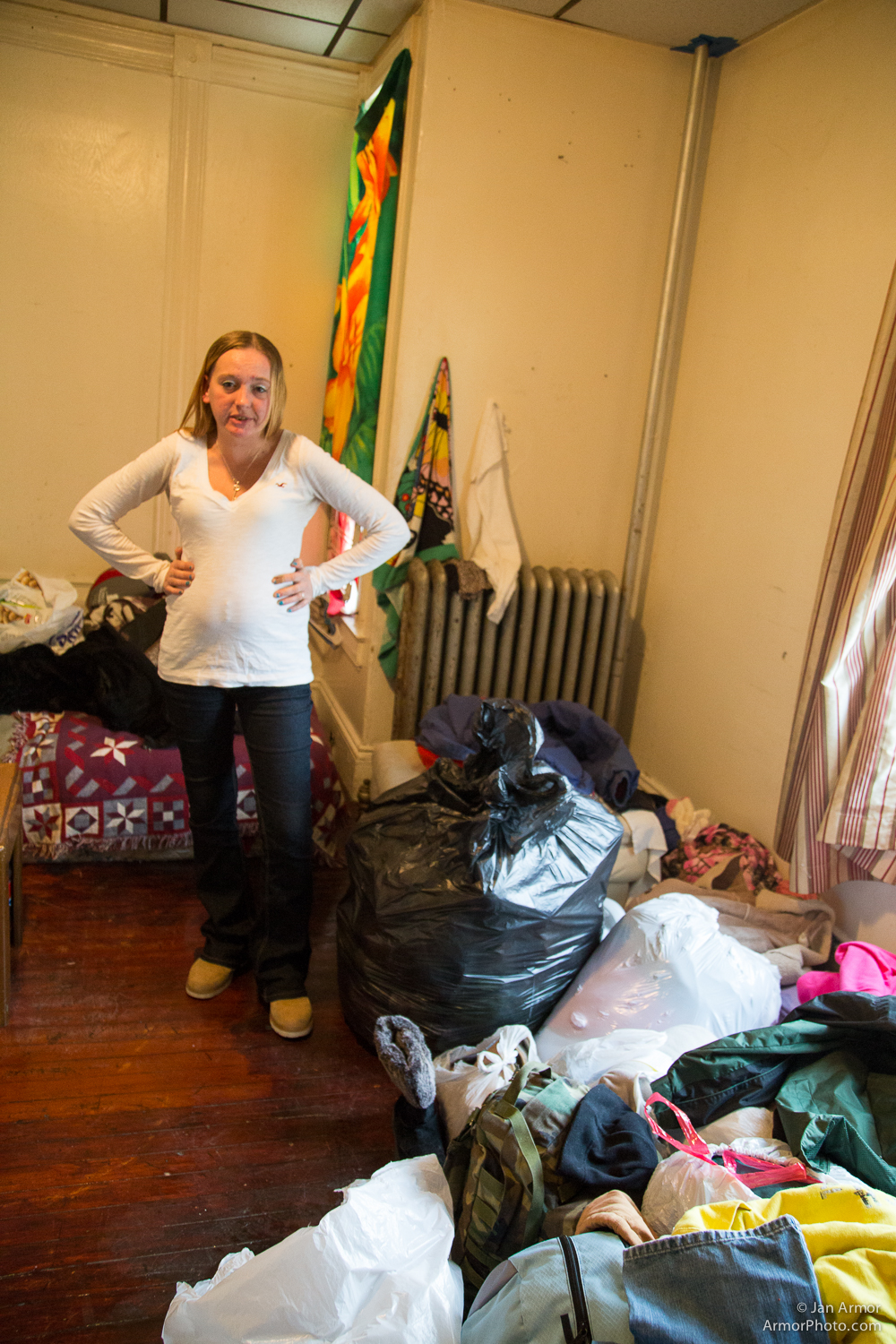The way it is... homeless for the holidays.
When you are homeless everything you own is on your back.
7:30 Sunday morning at the Mathewson Street United Methodist Church in Providence, Rhode island. The stuff in your backpack is all you have left. You can’t leave it unattended or it might be stolen. You keep it within arms reach when you are at the shelter. It is the way it is when you don’t have your home anymore.
68,800 people in Rhode Island are very poor, the way it is.
There were 68,800 people in Rhode Island living in "extreme poverty," meaning they had income that was less than half of the poverty level ($9,265 for a family of three).
Take this test below. See if you can live below the poverty line.
Alone on Christmas Day, the way it was for Roth
I received this poem from Roth Frias today. He has been on and off homeless for several years.
"Christmas day, all day snow, all day sheltered in the chapel of the mission. 5:00 chapel sermon, missing family in was hard not to weep. I wasn't alone. Many of us had no choice, we stayed. Showing tears was the only reason you could run out for a sec. Some braved it out and wept. Wasn't the saddest day of my life but it was hard. This poem was written for Christmas Day."
DECEMBER SNOW
For all the lonely people
who seeks company in December snow
We mingle in church and meetings
With~out the song of conversation
When words fill the air
laughter radiates in my mind
It is time
to reveal a smile
knowing it is lost
in the crowd
I am safe and secure
for if I cry
it will be lost
in air filled words
In this empty
crowded room
January 24, 2014
Providence Rescue Mission
Cranston, RI
Putting a face on hunger and homelessness in Rhode Island
Gus at the Sunday Friendship Breakfast in Providence.
The face of hunger in RI.
Trying to put a face on the people who are hungry. This is where your donations, canned goods, and used clothing go, places like RI Food Bank, Jonnycake Center, and churches everywhere. Please take the time this holiday season to remember those who aren't as fortunate as we are. Make a donation somewhere. And please share this post!
Mental illness is the way it sometimes is on the street.
Approximately 16% of the single adult homeless population suffers from some form of severe and persistent mental illness (U.S. Conference of Mayors, 2005). Despite the disproportionate number of severely mentally ill people among the homeless population, increases in homelessness are not attributable to the release of severely mentally ill people from institutions. Most patients were released from mental hospitals in the 1950s and 1960s, yet vast increases in homelessness did not occur until the 1980s, when incomes and housing options for those living on the margins began to diminish rapidly. According to the 2003 U.S. Department of Health and Human Services Report, most homeless persons with mental illness do not need to be institutionalized, but can live in the community with the appropriate supportive housing options. However, many mentally ill homeless people are unable to obtain access to supportive housing and/or other treatment services. The mental health support services most needed include case management, housing, and treatment.
The way it is when one school girl reached out.
From FB friend Janet Malenfant: "We became involved through our daughter... in the weeks after 9/11 we saw something on the news about family shelter donations declining because everyone was donating to the Red Cross. She asked 'What can we do to help?' ... and then she came up with a scheme to go xmas caroling in the neighborhood, ask for money and xmas gifts for the kids. She made up flyers and I printed them and she and her friends distributed them.
Hannah did this for 8 years until she went to college. She raised over $16,000 over those years, gave the shelter about 90 bags of clothing and collected books and gift cards for teens who are often overlooked at the holidays. She won several awards for her service and her story helped her to get into college. She was and is a pretty remarkable young woman!"
Indeed she is, Janet. This inspiring story is a good illustration of how just one person can make a difference.
Why are there so many homeless people?
Why so many homeless? According to the National Coalition For The Homeless there are two trends largely responsible for the rise in homelessness: a growing shortage of affordable rental housing and a simultaneous increase in poverty.
Homelessness and poverty are inextricably linked. Poor people are frequently unable to pay for housing, food, childcare, health care, and education. Difficult choices must be made when limited resources cover only some of these necessities. Often it is housing, which absorbs a high proportion of income that must be dropped. If you are poor, you are essentially an illness, or an accident away from living on the streets.
Another reason why homelessness persists is because of falling incomes and less secure jobs which offer fewer benefits. Low-wage workers have been left behind as the disparity between rich and poor has mushroomed. To compound the problem, the real value of the minimum wage in 2004 was 26% less than in 1979. This means the guy who serves up your burger or the lady who cleans your motel room when you are on vacation is living on the edge.
Declining wages, in turn, have put housing out of reach for many workers: in every state more than the minimum wage is required to afford a one- or two-bedroom apartment. Unfortunately, for many millions of Rhode Islanders more then 50% of their salaries go towards renting or housing costs, resulting in sacrifices in other essential areas like health care and savings.
A good read called "Hand To Mouth" by Linda Tirado brings it all into focus. You can listen to her tell it like it is here
Steve is the last to leave, just the way it is for him.
I met Steve at the very first breakfast I attended. That was seven weeks ago. He is always there, one of the very first to arrive, and one to the last to leave. He does not mind being photographed, and we have talked several times. I introduced him to Kathy and they seem to have hit it off. He is a gentle soul and alone after the passing of his wife. He’s been on the street for almost two years now. I’m not sure where he will go from here.
Cold is the way it was on Mathewson Street last night.
Where did you sleep last night? I know where this woman did... in the doorway of the Grace Episcopal Church. We see her there every Sunday morning as we pass by.
The Way It Was in NYC Gallery Tour With Shane
It was a very long day with lots to see! From Atget’s Paris scenes to Carla Van De Puttelaar’s gigantic nudes it was a visual feast. We rode the subway uptown, down town and all around town making pictures all the while. Vivian Maier's never before seen street photos (some printed by Viv’s own hand) at the Howard Greenberg were A+. Nuri Ceylon’s moving portraits of his father at Tina Kim were perhaps my favorites but then the solarized photographs by Edmund Teske that were great. This gallery tour was all in all an eye opening experience. What’s going on photographically in the Big Apple was a revelation. Four feet by six feet isn’t big anymore, at least not there, with price tags from $10,000 to over $100,000. The absolutely WOW!!! (big) portraits of by Martin Schoeller must be seen to be appreciated. Another favorite. We ended the day in the pouring rain swallowed by the masses, street shooting (including some weirdo in skimpy underpants) in Times Square and at THE Christmas Tree at Rockefeller. Thanks Shane…. Great trip!!! Click to enlarge, and please share.
Alone is the way it is.
Many of the homeless folks I meet at the Sunday Friendship Breakfast are alone. They come in alone and leave alone so this is an opportunity for a person to sit and get a decent meal in a warm place. It is also a chance to talk with the other people at the table, maybe make friends. And sometimes it is a chance to talk with me. I am beginning to learn the names of some of the regulars and can greet them by their name. When I approach I smile and ask if I can take their picture. Some people decline or turn away but many of my subjects agree. I think they are actually flattered that someone has noticed them, probably a rarity when you are on the street. Both of us see this picture as an opportunity to connect for a few moments. This is the way it is in the church hall on Mathewson Street on a Sunday morning.
Here is a portrait of soft spoken Steve. He usually is one of the first to arrive and sits at the same place. We have talked a couple of times. He told me he lost his job with the Postal Service as they cut back. I doubt it has been easy for him. Click to enlarge, and please share this post.
The Way It Was in class yesterday.
Second session of “Seeing Well” at OLLI, URI
We watched videos and I projected pictures by three very good photographers (Ruth Bernhard, Ralph Gibson, and the incomparable Roy DeCarava) We noticed how they used the light to make dramatic photographs. We talked composition, and in particular how diagonal lines add power to a static image. We split into teams for the class exercise. I challenged students to “see the light” and use diagonals. We projected the results and massaged the images a little in Lightroom. Here’s the class favorite, a simple pull chain for a window shade in our class room. Something out of nothing… That's what I call "seeing well".
Portraits at the Mathewson Street United Methodist Church in Providence, Rhode island
Not quite homeless in Providence, the way it is.
For rent in Prov, unfurnished studio apartment, only $580 per month, just off a main street. Well used refrigerator and microwave included. No stove. No closets or kitchen cabinets. Ancient radiator heat but thermostat controlled from superintendent’s unit. Must share one bathroom with 3 other units.
This is Danielle’s world, but at least she is not homeless anymore. She shares this space with her mother. A friend helps make the rent. She was eager for me to take pictures. She wanted people to see how she is making it in America. She is looking for something better. She can always hope.
This is the way it is for her and her mom, three days after Thanksgiving, 2014.
The way it was on Thanksgiving, 2014
Like most of us, this time of year has me counting my blessings, which are many. And like most of us, it is also about this time every year when the solicitations begin to appear in the mailbox, many of which are worthy causes. These requests are perfectly timed, for sure. There is one we just received that calls out to Kathy and I because we have seen where the money goes. It is the RI Community Food Bank. Words cannot convey how impressed I am by this organization.
The Food Bank’s efforts touch the lives of so many people on the edge.They truly make a difference. I’ve seen it first hand because I have been photographing for several organizations that work with the “food insecure” of Rhode Island. Here are a few pictures of people who use places like the Jonnycake Center’s Food Pantry, or the Sunday Friendship Breakfast at the Mathewson Street United Methodist Church in Providence. These centers and many others across our state distribute food from the Bank. You can go to the Food Bank’s website to read just how many tons of food goes out their door each year. Amazing work.
I visited the RI Food Bank this spring and did photos of the volunteers and the facility itself. It is impressive. I’ve included a couple of shots here. Unlike some of the organizations where I really wonder just how much of my donation is actually used to do something worthwhile, I can tell you that giving a few of your hard earned dollars to RI Community Food Bank will end up feeding hungry people and doing good works. I’ve seen the people who depend on this food. I’ve seen their smiles and heard their thanks. So after I count my blessings today, I plan to write another check to the Bank. Happy Thanksgiving.
Together is the way it is
I’m not sure but I suspect being a couple when you are homeless might make it a little easier. It least you’re not alone, and there is someone to watch your backpack. If you are sick the other person can help, if you are sad, they can give you a hug. You have someone to talk to, and two heads are usually better than one.
I’ve met several homeless couples at the Sunday Friendship Breakfast. Most seem happy to have each other. Most smile for the camera. One couple (upper left) said they were newlyweds. They were proud to tell me they were just married by the pastor at a church nearby.
Still, the difficulties of living on the street present the same problems, just times two.The cold, the hunger, the danger, it’s still there. Click to enlarge.
Everything is on your back when you are homeless.
When you are homeless, all you own is in your backpack. That’s the way it is. Roth has been homeless for almost three years. He says, “When a person gets homeless I don’t care how much valuables they have, they are all going to disappear. You’re going to lose it in your storage, because you can’t pay the storage. You’re going to lose your car because the cops are going to confiscate it because your driving with out a tax and registration.”
Danielle isn't homeless now but she was for 6 years, from when she was 20 till just recently. She describes the way it was at the Providence Rescue Mission on Cranston Street. "You go in at 4 PM and the men and the women are separated. At 5 PM there is a church service together. At 5:30 the meal is served. After dinner, we are separated again. The women sleep on mats on the floor in a big huge room. The first 40 men get bunk beds, left overs get mats on the floor too."
Danielle says, "That is half fair, but not half fair. But it is safe, and warm, and the food’s good.” She continues, “You can only leave one bag there, in a closet, only about size of a back pack. If you get caught with more you get thrown out for 30 days or more."
"This wouldn’t be a problem if there was another shelter for women in the area but there isn’t. So the women are stuck now, outside. I don’t know what they can do but I don’t think that’s very fair. I was thinking there should be more shelters for women. They can go to Crossroads but Crossroads sends them to wherever, I think they call it “overflow” downstairs in their community room, only if it is an emergency and you have no other place to go."
"You must leave (the Rescue Mission) at 7 AM and can’t go back until 4 PM. Must people just hang around because that is what they are used to doing. We don’t really have guidance out here. They tell you what to do but they don’t direct you and help you to do it. So people kinda they get careless, don’t really want to do anything. It all catches up on you. We go to the library but I don’t really like the library. We go to soup kitchens. We used to go to a church in Bristol, it was a day shelter. You could spend all day there, until 2 o’clock.They have lunch, they have bingo sometimes, couple other things. We’ll go walk around the mall. If we have money we’ll go out, see a movie or something, but that’s very rare. (laugh)"
Roth explains, "It all happens within a really small time frame. By the time you realize you are homeless you are totally lost and depressed. You don’t know what to do. You don’t even know if there is a homeless shelter around because you have never been homeless before. Whereas these other people who have an addiction, they don’t mind being homeless. they don’t mind living in this situation where money doesn’t last."
Daily challenges are just the way it is.
I met Vincent as he was picking through the used clothing that Pastor Jack had just piled on a table. I had seen four strong men lift his wheel chair up the steps and into the church just a few minutes earlier. He was a big man with a patch over his right eye, and a friendly smile. He had a little license plate on the side of his chair the proclaimed his first name. He was missing part of his left leg. I asked him if he was a veteran and nodded yes. I guessed “Were you in Iraq?” and he answered, “No, Granada…” Then he added that he wasn’t injured there, “even though the bullets were flying.” We small talked a while and he indicated that he didn’t mind me taking his picture as he held up a pair of pants that might fit. He was clearly more interested in the clothing than me.
I have been thinking about Vincent, and the trials he faces every day as a homeless man with a disability. Setting aside the access issues that all people in wheel chairs endure daily, being on the street, finding shelter, food, clothing, warmth, even a bathroom, all must challenge him. Yet here he was in front of my camera, with a little smile on his face. I hope the pants fit, Vincent.
































